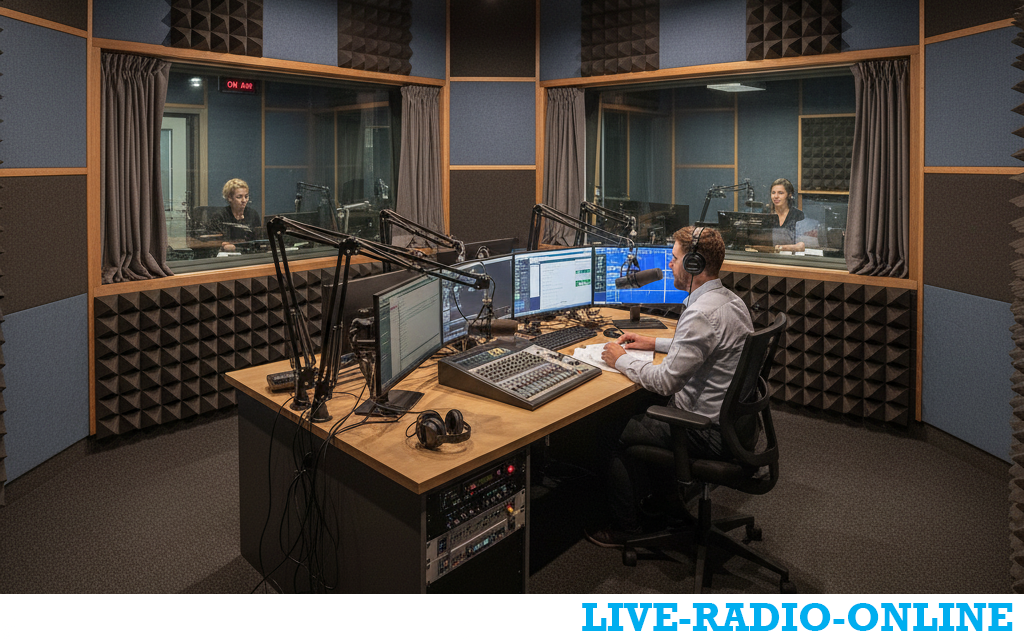
Soundproofing is critically important in radio, but it is not the only acoustic concern. It works in tandem with acoustic treatment, and the two serve different, equally vital purposes.
Let's break down why it's so crucial, distinguishing between soundproofing and acoustic treatment.
1. Soundproofing vs. Acoustic Treatment: The Key Distinction
-
Soundproofing (Isolation): This is about keeping sound from getting in or out of a room. Its goal is to prevent external noise from being recorded and to prevent the broadcast from leaking out and causing feedback or being overheard.
-
Acoustic Treatment: This is about controlling the sound within a room. It manages echoes, reverberation, and standing waves to make the recorded voice sound clear, dry, and professional.
For radio, you need both, but their importance shifts depending on the context.
2. The Critical Importance of Soundproofing (Isolation)
Soundproofing is non-negotiable for a professional broadcast for several reasons:
-
Preventing Unwanted Noise: The most obvious reason. A radio studio cannot have the sound of traffic, air conditioning, computer fans, phones ringing, or colleagues talking in the background. These noises are distracting, unprofessional, and can make the audio unusable. A soundproofed environment ensures that the only sound the microphone picks up is the intended source (the presenter's voice).
-
Preventing Feedback and "Leakage": In a live radio environment, the presenters are often listening to the mix through headphones or speakers. If that sound leaks out of the room and back into the microphone, it can cause a feedback loop. Soundproofing contains the sound within the control room or studio.
-
Creating a Controlled Environment for Processing: Modern radio uses heavy audio processing (compressors, limiters, EQ) to make voices sound "big" and consistent. These processors will amplify everything the microphone picks up, including quiet background noises. A soundproofed space gives a clean, pure signal to work with.
-
Privacy and Confidentiality: During news broadcasts, interviews, or call-in shows, sensitive topics may be discussed. Soundproofing ensures these conversations remain private.
3. The Equally Critical Role of Acoustic Treatment
While soundproofing keeps noise out, acoustic treatment makes the voice inside sound good.
-
Eliminating Echo and Reverb: A bare, rectangular room with hard surfaces (like an office) creates a lot of reflection and reverb. This makes a voice sound hollow, distant, and "roomy," like you're talking in a bathroom. Radio requires a very "dry" sound—intimate, clear, and direct. This is achieved using absorption panels (foam, rockwool) on walls and ceilings.
-
Preventing Comb Filtering: When a sound reflects off a hard surface (like a desk) and combines with the original sound, it causes phase cancellations known as "comb filtering." This creates a thin, metallic, and unnatural quality to the voice. Proper acoustic treatment and microphone placement eliminate this.
-
Controlling Low-End Buildup: Bass frequencies can build up in the corners of a room, making a voice sound boomy or muddy. Bass traps placed in corners are a form of acoustic treatment that solves this problem.
Summary: The Perfect Radio Studio
A professional radio studio is a combination of:
-
A Soundproofed Shell: Heavily insulated walls, doors, and windows (often double-glazed) to achieve a high Sound Transmission Class (STC) rating. This is the "isolation booth."
-
An Acoustically Treated Interior: Strategically placed absorption panels on walls, a thick carpet on the floor, and bass traps in the corners to create a sonically "dead" space.
Are There Exceptions?
Yes, the importance can be contextual:
-
Field Reporting: A journalist reporting from a noisy location relies on a good directional microphone (like a shotgun mic) to isolate the voice as much as possible. Soundproofing the environment isn't an option.
-
Podcasting from Home: Many hobbyist podcasters start without a soundproofed room. They rely heavily on acoustic treatment (a reflection filter or a treated closet) and choose quiet times to record. While not ideal, it can produce acceptable results.
-
Talkback/Production Areas: Rooms where microphones aren't typically live may not need the same level of soundproofing but will still benefit from acoustic treatment for clarity of communication.
Conclusion
Soundproofing is a foundational element of professional radio. It is the first and most critical step in achieving a clean, broadcast-quality audio signal. Without it, even the best microphones and most talented broadcasters will sound amateurish. It is the essential barrier that separates the controlled world of the studio from the unpredictable noise of the outside world, ensuring that the only thing hitting the airwaves is the clear, intentional sound of the broadcast.


